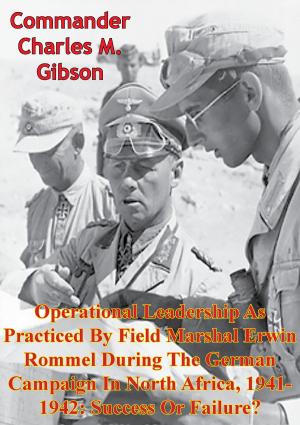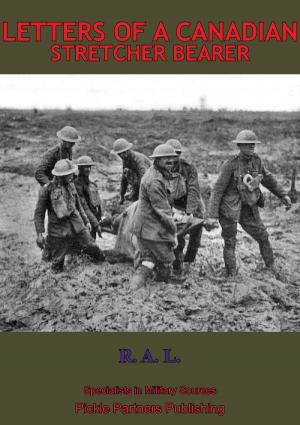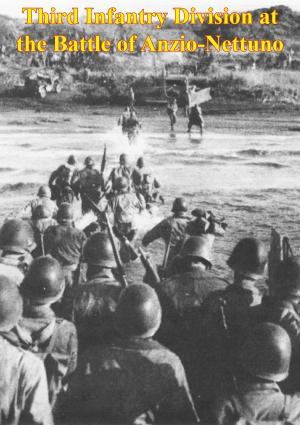Achieving Operational Flexibility Through Task Organization:
How The American Forces In Europe Beat Nazi Germany By Making The Difficult Routine
Nonfiction, History, Germany, European General, Military, United States| Author: | Lt.-Col. Brian North | ISBN: | 9781782895206 |
| Publisher: | Lucknow Books | Publication: | August 15, 2014 |
| Imprint: | Lucknow Books | Language: | English |
| Author: | Lt.-Col. Brian North |
| ISBN: | 9781782895206 |
| Publisher: | Lucknow Books |
| Publication: | August 15, 2014 |
| Imprint: | Lucknow Books |
| Language: | English |
On the eve of World War II, the U.S. Army was a small cadre force without deployable combat divisions. Because of years of preparation and planning during the interwar years, the Army completed the transformation into a huge organization with multiple army groups spread across the world in less than four years. This new army displayed remarkable battlefield flexibility. Doctrine and training guided senior leaders in the European Theater of Operations to ensure overwhelming combat power at the point of attack. They constantly shifted their divisions, a limited asset on the continent for the majority of 1944, between corps headquarters immediately prior to major battles. Many divisions changed corps assignments four times in a three-month period and corps moved between armies on a regular basis with no apparent difficulty. Changing task organization in the face of the enemy is a complex undertaking, affecting command relationships, logistics, and every other staff function. Despite the potential for introducing unwanted friction, the shifting of units from one headquarters to another was a common practice in the European theater in 1944. How were these newly formed units able to display the flexibility to integrate effectively while engaged in combat?
This monograph proposes operational flexibility resulted from a unique American way of war developed during the interwar period by veterans of the First World War. Three factors -- common doctrine, carefully selected leaders, and an effective organizational structure -- provided senior commanders the organizational flexibility they required in combat. Without this flexibility, the Army would have had difficulty executing its breakout from the Normandy bridgehead, pursuing the retreating German forces across France, and quickly thwarting the Nazi offensive in the Ardennes at the end of 1944.
On the eve of World War II, the U.S. Army was a small cadre force without deployable combat divisions. Because of years of preparation and planning during the interwar years, the Army completed the transformation into a huge organization with multiple army groups spread across the world in less than four years. This new army displayed remarkable battlefield flexibility. Doctrine and training guided senior leaders in the European Theater of Operations to ensure overwhelming combat power at the point of attack. They constantly shifted their divisions, a limited asset on the continent for the majority of 1944, between corps headquarters immediately prior to major battles. Many divisions changed corps assignments four times in a three-month period and corps moved between armies on a regular basis with no apparent difficulty. Changing task organization in the face of the enemy is a complex undertaking, affecting command relationships, logistics, and every other staff function. Despite the potential for introducing unwanted friction, the shifting of units from one headquarters to another was a common practice in the European theater in 1944. How were these newly formed units able to display the flexibility to integrate effectively while engaged in combat?
This monograph proposes operational flexibility resulted from a unique American way of war developed during the interwar period by veterans of the First World War. Three factors -- common doctrine, carefully selected leaders, and an effective organizational structure -- provided senior commanders the organizational flexibility they required in combat. Without this flexibility, the Army would have had difficulty executing its breakout from the Normandy bridgehead, pursuing the retreating German forces across France, and quickly thwarting the Nazi offensive in the Ardennes at the end of 1944.


![Cover of the book Road To Huertgen: Forest In Hell [Illustrated Edition] by Lt.-Col. Brian North](https://www.kuoky.com/images/2014/august/300x300/9781782898467-CKj5_300x.jpg)






![Cover of the book The Spider Web, The Romance Of A Flying-Boat War Flight [Illustrated Edition] by Lt.-Col. Brian North](https://www.kuoky.com/images/2013/january/300x300/9781782891024-6SVM_300x.jpg)


![Cover of the book OMAHA BEACHHEAD - (6 June-13 June 1944) [Illustrated Edition] by Lt.-Col. Brian North](https://www.kuoky.com/images/2014/august/300x300/9781782892632-IFKo_300x.jpg)

![Cover of the book German Methods Of Warfare In The Libyan Desert [Illustrated Edition] by Lt.-Col. Brian North](https://www.kuoky.com/images/2015/november/300x300/9781786257550-ZmGO_300x.jpg)
